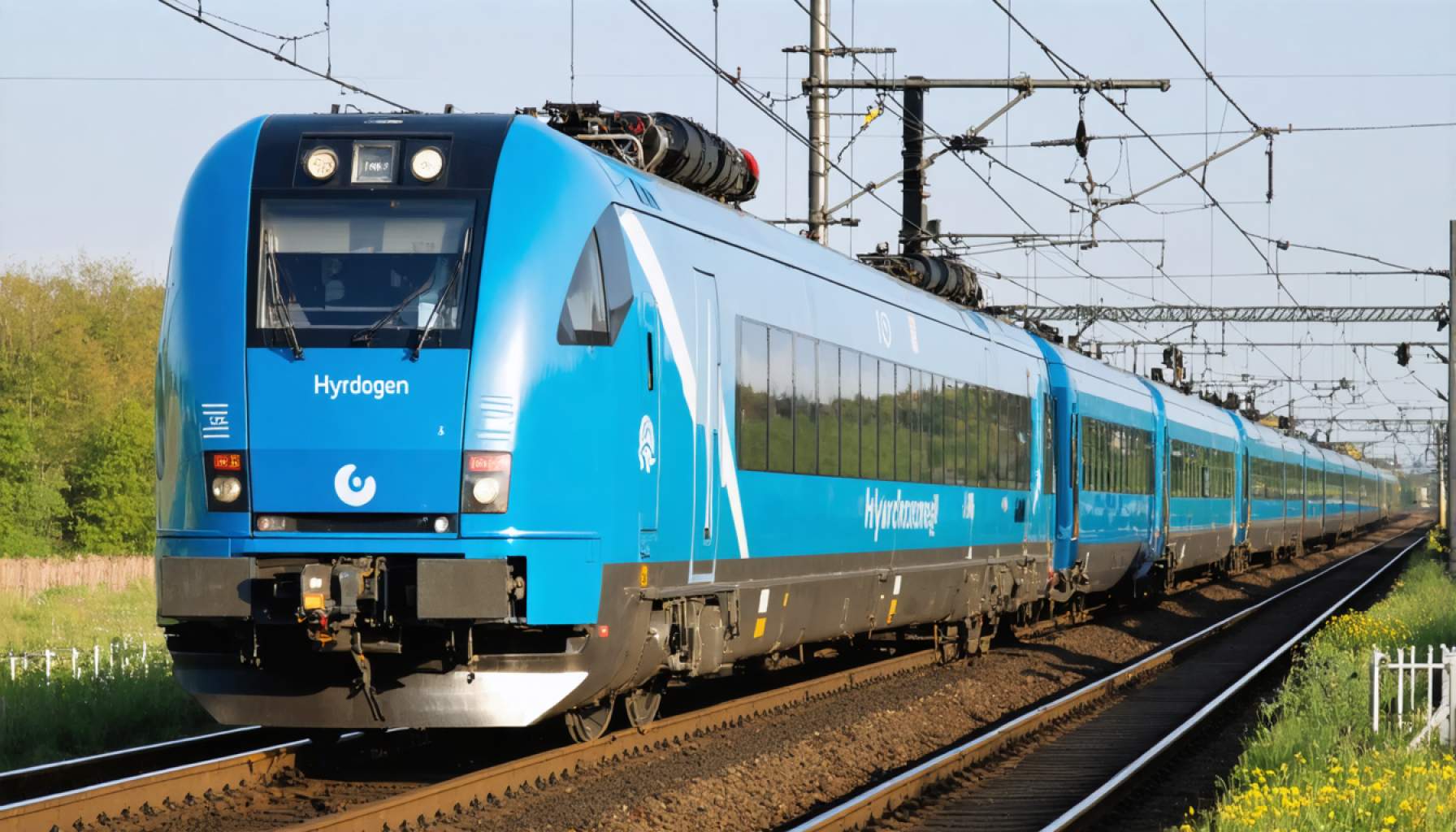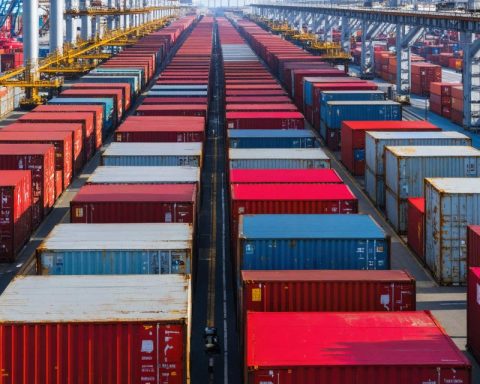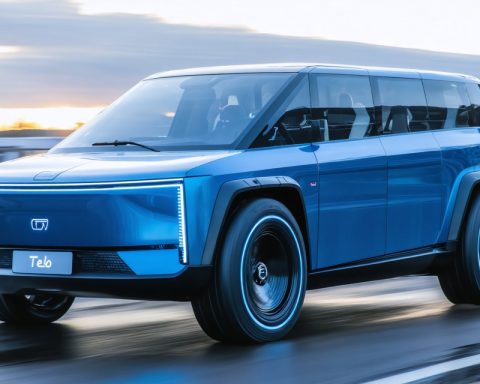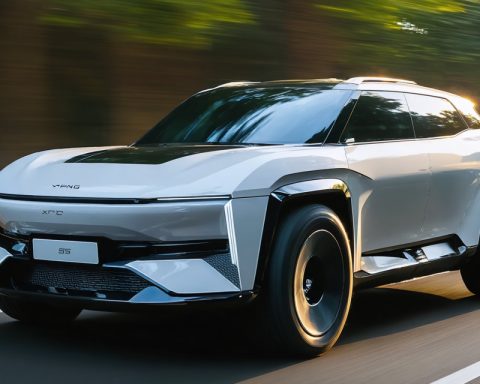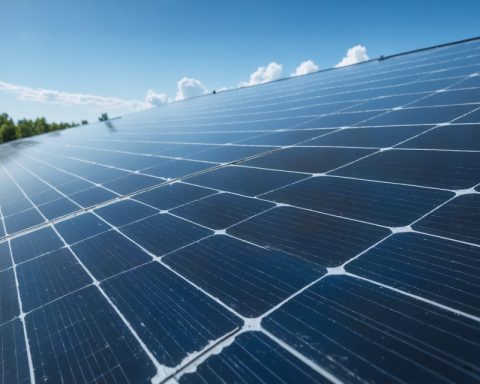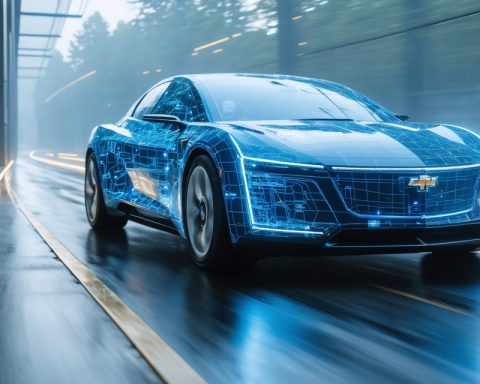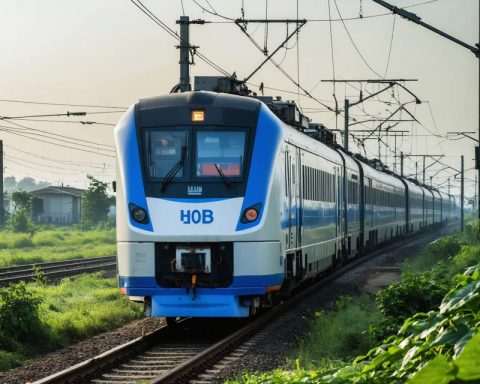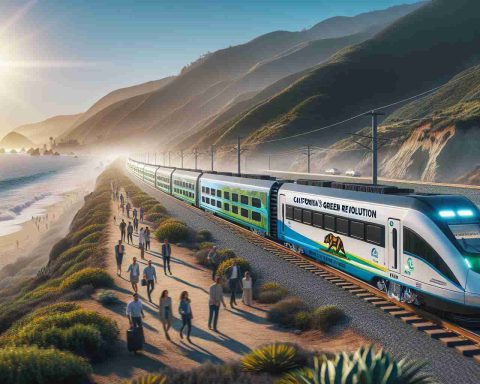- The UK rail network plans to replace diesel trains with hydrogen-powered locomotives for a cleaner transport future.
- Over 10% of UK rail routes are non-electrified, hindering the goal to phase out diesel trains by 2040.
- Hydrogen technology offers a practical solution, significantly reducing greenhouse gas emissions.
- Hydrogen trains could eliminate 187,000 metric tons of CO2 emissions over a 30-year lifespan.
- Rigorous testing confirms that hydrogen trains can match diesel in performance with added environmental benefits.
- The initiative supports the UK’s commitment to reaching net-zero emissions, emphasizing hydrogen’s role in sustainable transport.
Beneath the steel arcs and iron arteries of the United Kingdom’s bustling rail network, a transformative force brews—a quest to replace the once-emblematic diesel trains with hydrogen-powered locomotives. Amid the rhythmic clatter of railcars, this revolution promises a cleaner, brighter future for public transport, with hydrogen at its core.
Currently, over 10% of the UK’s rail routes stubbornly remain non-electrified, posing a significant challenge to the ambitious goal of phasing out diesel trains by 2040. The railway’s dependency on diesel—a versatile but pollution-heavy fuel—continues to clash with the country’s commitment to reducing greenhouse gas emissions. Here, the allure of hydrogen technology emerges as a practical beacon, aiming to redefine this stalwart of British transport.
Imagine billowing steam replaced by wisps of water vapor; this is a future where hydrogen-powered trains carve a path across the verdant landscapes from Manchester Airport to Barrow-in-Furness, leaving zero carbon footprints in their wake. An impressive 187,000 metric tons of CO2 emissions could be erased over a train’s typical 30-year lifespan, demonstrating hydrogen’s immense green potential.
Such an initiative doesn’t merely rely on fantasy—it undergoes rigorous testing, validated time and again against experimental data. These simulations assure us that hydrogen trains can match their diesel predecessors in performance while offering an environmental advantage.
The UK’s exploration of hydrogen as a sustainable alternative energizes its pledge toward net-zero emissions. This evolutionary track does not simply electrify the journey ahead—it turns it hydrogen bright, underlining a critical message: the road—or rather, the rail—to decarbonization is not only plausible but well within reach. As the wheels turn ever forward, the promise of hydrogen unravels, charting a new course on the map of sustainable transportation.
Hydrogen Trains: The Future of UK’s Railway Network Unveiled
How-To Steps & Life Hacks for Implementing Hydrogen-Powered Trains
1. Infrastructure Development: Begin with assessing existing rail networks that could be easily adapted for hydrogen trains. Ensure refueling stations are strategically located along key routes.
2. Technology Integration: Collaborate with hydrogen fuel cell developers to retrofit existing trains or construct new hydrogen-compatible models. Incorporate feedback from field tests into design improvements.
3. Training Programs: Establish comprehensive training for rail staff to safely operate and maintain hydrogen trains. Safety protocols should be a focal point in the training curriculum.
4. Pilot Programs: Launch pilot routes for hydrogen trains to collect data on performance, fuel consumption, and environmental impact. Use these insights for broader deployment plans.
5. Public Engagement: Encourage dialogue with communities to educate them about hydrogen technology’s environmental benefits. Foster public support through awareness campaigns.
Real-World Use Cases
– Remote and Non-Electrified Routes: Particularly beneficial for rural and remote areas where electrification is expensive and challenging. Hydrogen trains can ensure efficient and environmentally friendly connectivity.
– Urban Commuter Lines: Hydrogen trains can replace diesel locomotives on suburban and metropolitan lines, significantly cutting emissions in densely populated areas.
Market Forecasts & Industry Trends
The global hydrogen train market is anticipated to see substantial growth, with Europe slated as a major contributor due to its stringent emission targets. According to a report by Market Research Future, the hydrogen train market could reach a valuation exceeding USD 2 billion by 2030.
Reviews & Comparisons
– Hydrogen vs. Electric Trains: While both alternatives reduce emissions, hydrogen trains require less infrastructural modification on non-electrified lines.
– Hydrogen vs. Diesel Trains: Hydrogen trains offer a quieter, zero-emission alternative to diesel, although current cost per unit is higher than diesel maintenance and operations.
Controversies & Limitations
– Infrastructure Costs: The establishment of hydrogen production and refueling infrastructure can be expensive.
– Energy Source: Critics argue the source of hydrogen production (whether green, blue, or grey) as it affects overall sustainability and carbon footprint.
Features, Specs & Pricing
– Typical Range: Hydrogen trains can travel 600-800 kilometers on a single tank.
– Refueling Time: Refueling a hydrogen train can take as little as 20 minutes, which is comparable to diesel refueling times.
– Cost: Initial setup costs may be high, but long-term operational costs are expected to decrease as hydrogen technology becomes mainstream.
Security & Sustainability Insights
Hydrogen trains mostly produce water as an emission, making them a secure choice for clean energy. However, ensuring the hydrogen supply chain is powered by renewable sources is vital for true sustainability.
Pros & Cons Overview
Pros:
– Zero emissions leading to significant environmental benefits.
– Lower noise pollution compared to diesel.
– Suitable for remote and economically challenged rail lines.
Cons:
– High initial costs for infrastructure and train modification.
– Dependence on the availability of clean hydrogen production facilities.
Recommendations & Tips
– Consider government incentives or partnerships to offset infrastructure costs.
– Begin with hybrid models that can switch between hydrogen and existing fuels to ease transition in early stages.
– Stay informed on advances in hydrogen production technologies, such as electrolysis using renewable energy sources.
For more information, visit the official site of the UK’s Department for Transport: UK Government.
The adoption of hydrogen trains represents a promising leap towards a sustainable future in the UK’s rail industry. By addressing current limitations and focusing on strategic implementation, hydrogen technology can deliver a greener and more efficient transportation system.
